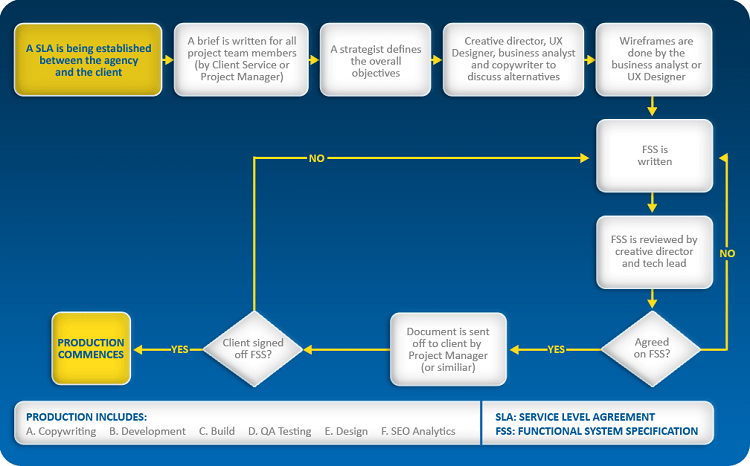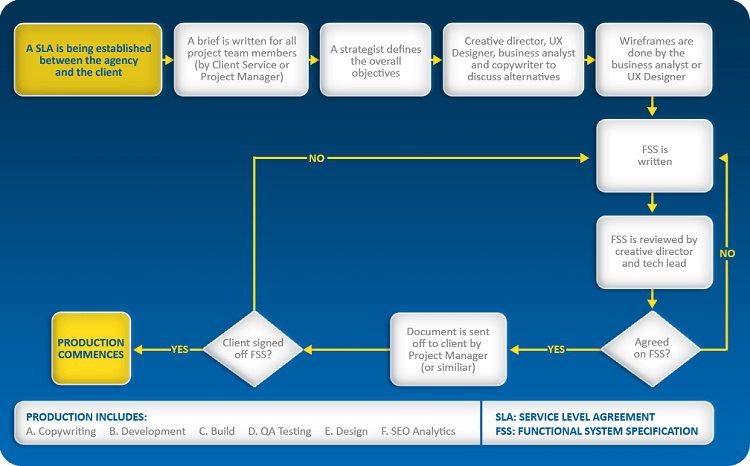
Business Analysis in the Modern Full-Service Agency
Since the 1970s, the role of Business Analysis in software development cycles has gained significant importance. However, the presence of the business analyst has also grown in the web development sphere (especially in larger agencies), but the exact role still overlaps in many departments within larger agencies. This article focuses on the Business Analyst’s role in web and digital development.
The diagram below depicts a typical agency workflow, with the inclusion of the Business Analyst’s role:

Essentially, the onus of a Business Analyst in an agency is to create a functional specification to:
- Define the scope and get sign off from the client
This is to eliminate the catastrophe of the lack of agreement between the client and the agency, especially in terms of system functionality and general scope. This can cause immense strain and stress between an agency and its client. Typical strains include resources that have to be rebooked, budgets that dry up, demotivation from production teams and late delivery within the client’s space. - Define guidelines to developers and designers
Functional System Specifications have to be fleshed out in the most detail possible for other team stakeholders such as designers and developers to be fully aware of all the system specifications.
- From a design perspective: Ultimately, a wireframe should never limit the designers’ creativity, but rather encourage further innovative thinking by providing a framework for creativity. As reality speaks, budget and time are always on the scale, which does not mean creativity must be undermined, but rather controlled. Designers are thus still allowed to use the wireframes as a guideline, rather than a system set in stone.
- From a development perspective: Functionality is defined and finalised upon sign-off of the Functional System Specification. It is therefore the duty of the technical lead to ask all questions before the document is delivered to the client. Having said this, if functionality changes due to improvements during design (or other discoveries), then change requests have to be written as addendums to the signed off functional specification.
It is very beneficial for Business Analysts to have a development and technical background so that best practices (for example technology preferences and database design) can be proposed. It also saves time for developers due to development groundwork that is done before development commences.
In conclusion, it is clear that the Functional System Specifications can be used in the master document for Production and if followed correctly, it will save the agency and the client a great deal of money, time and energy.
In my next article I will discuss best Functional System Specification guidelines for the modern digital agency.
Don’t forget to leave your comments below.